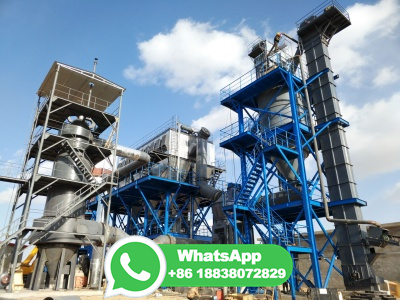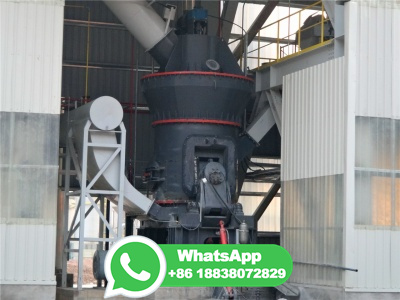
SiC is one of the main intermediate compounds formed during the industrial production of silicon (Si). In the Si process, SiC is produced when carbon added to the raw materials reacts with the silicon monoxide gas (SiO(g)) formed in the furnace. Carbon materials used are either biomassbased (charcoal and wood chips) or based on fossil sources (coal, coke, petroleum coke). The most common ...
WhatsApp: +86 18037808511
Explanation: The process of converting coal into coke is called carbonization. When coking coal is heated in absence of air, porous, strong and hard residue left is called coke. 3. Depending on the behaviour of the coal, when it is heated in the absence of air, it can be categorized into _____ categories. a) 2 b) 3 c) 4
WhatsApp: +86 18037808511
In this study, we studied the feasibility of preparing highquality needle coke from coal liquefaction pitch. Nine types of blending pitch (coal liquefaction pitch and anthracene oil mixed with different ratios) were used as raw materials to generate needle coke via the cocarbonization method. Optical microscopy, Xray diffraction, Raman spectroscopy and scanning electron microscopy were ...
WhatsApp: +86 18037808511
We would like to show you a description here but the site won't allow us.
WhatsApp: +86 18037808511
Journal Article: Theoretical and experimental investigations into the particular features of the process of converting coal gas hydrocarbons on incandescent cokeTheoretical and experimental investigations into the particular features of the process of converting coal gas hydrocarbons on incandescent coke
WhatsApp: +86 18037808511
Coal tar pitch is a byproduct of metallurgical grade coke (metcoke) production. ... Magean, Liviu, Stansberry, Peter G, Stiller, Alfred H, and Zondlo, John W. PRODUCTION OF CARBON PRODUCTS USING A COAL EXTRACTION PROCESS. United States: N. p., 2004. Web. doi:/887333. ... A Novel Process for Converting Coal to HighValue Polyurethane ...
WhatsApp: +86 18037808511
Illustration about Coaltocoke conversion. Coke production for blast furnace ironmaking. Vector illustration. Illustration of industry, education, processing
WhatsApp: +86 18037808511
The conversion of coal to liquid fuels and/or chemicals. ... Coal provided heat for homes and industry, fuel gas for town lighting, process gas for industry, coke for the iron industry, and fuel for steam locomotives and shipping during the first quarter of the twentieth century. Although electric power has supplanted coal gas for public ...
WhatsApp: +86 18037808511
María Antonia Diez, Roberto Garcia, in New Trends in Coal Conversion, 2019. Abstract. The carbonization of coal to produce metallurgical coke in slottype recovery ovens is the main source of coal tar production. But tar is not a prime process target, and its composition and properties are subordinated to the primary aim of producing ...
WhatsApp: +86 18037808511
Coke and Coal. By distilling bituminous coal in retorts to obtain gas for illumination, or by burning it in kilns or pits, the residue left behind is called coke, which is simply coal charcoal ...
WhatsApp: +86 18037808511
As the coppicing of forests became unable to meet the demand, the substitution of coke for charcoal became common in Great Britain, and coke was manufactured by burning coal in heaps on the ground so that only the outer layer burned, leaving the interior of the pile in a carbonized state.
WhatsApp: +86 18037808511
The coking process (coal to coke) occurs in the coke ovens. Finally, coke is removed using a pusher on one side and a coke guide on the other. The heat required for the coking process is supplied from the combustion chambers to the coke ovens through the refractory wall that separates the coke oven and the. Process modeling
WhatsApp: +86 18037808511
Coke is used as a fuel for heating in several industries, and the combustion of coke produces more CO 2 per fuel mass than coal 1. Coke is also used in the steel and aluminum industries as an ...
WhatsApp: +86 18037808511
To decarbonize steel production and its high carbon dioxide emissions, Fraunhofer researchers, TS ELINO and Salzgitter AG are working on converting an existing steel mill to climateneutral production methods. The aim is to produce steel by the direct reduction of iron ore with hydrogen, which would completely replace harmful coke as a ...
WhatsApp: +86 18037808511
The direct reduction demonstration plant enables us to optimize the reduction process and how it interacts with the other process steps. Through this work, we are creating the basis for sustainable steel production with low CO 2 emissions." The company aims to convert a third of its steel production to the climatefriendly process with ...
WhatsApp: +86 18037808511
Convert A Single Coordinate Value. Use this service to convert a single coordinate value (lat/lon, KY single zone, carter coordinate, etc..) to 14 different coordinate values. ... Most of the chemicals derived from coal come from byproducts produced during the coking process. Coal is used to make coke to make steel. Coke gas (also called foul ...
WhatsApp: +86 18037808511
Cokes from different coal blends have different contents of anisotropic shapes, to > μm in size, arising from the heterogeneous nature of the plastic (fluid) phase of carbonization from which the liquid crystal structures develop. Classifications of anisotropy are listed.
WhatsApp: +86 18037808511
Formed coke process. A formed coke process where coal is briquetted and carbonized is totally different from the conventional cokemaking process where powder coal is carbonized and transformed into a lump coke in a slottype coke oven chamber. In this section, two examples of the formed coke process from Japan are reviewed.
WhatsApp: +86 18037808511
These operations will be discussed in greater detail for the three major subprocesses: coal preparation and charging, thermal distillation and pushing, and byproduct recovery. Coal Preparation And Charging For ByProduct Coke Ovens The coal that is charged to the ovens is usually a blend of two or more low, medium, or high volatile ...
WhatsApp: +86 18037808511
the process of converting coal into coke using the byproduct coke oven, the volatile matter in the coal is vaporized and driven off. This volatile matter leaves the coke oven chambers as hot, raw coke oven gas. After leaving the coke oven chambers, the raw coke oven gas is
WhatsApp: +86 18037808511
Semantic Scholar extracted view of "Highly efficient carbon utilization of coaltomethanol process integrated with chemical looping hydrogen and air separation technology: Process modeling and parameter optimization" by D. Xiang et al. ... Highly flexible and energyefficient process for converting cokeoven gas and pulverized coke into ...
WhatsApp: +86 18037808511
A novel process designed for producing methanol from coke oven gas (COG) integrated with CO 2 recycle is proposed. In the new system, oxygen replacing air is blown to combustor for assisting combustion of COG and unreacted syngas from methanol synthesis process. The combustion process provides to the heat required in the coking rest COG reacts with the recycled CO 2 separated from ...
WhatsApp: +86 18037808511
Coal gasification is an important industrial process for converting raw coal into more useful and cleaner carbon feedstocks for use in power generation and as precursors for other transformations. ... In the formation of coke from coal, the process of hydrocarbon gas generation during devolatilization typically finishes rapidly because of high ...
WhatsApp: +86 18037808511
The proposed molten salt electrolysis process achieves the sustainable electrochemical conversion of high‐sulfur petroleum coke into high‐purity graphitic carbon, which exhibits excellent ...
WhatsApp: +86 18037808511
1. When coal is heated to a certain temperature while cutting out air supply, it turns into a residue of solid carbonaceous form known as coke. 2. The nature of the residue depends on the temperature at which the coal is heated. Generally it is hightemperature carbonization which helps convert coal to coke.
WhatsApp: +86 18037808511
Abstract. Development of renewable energy is essential to mitigating the fossil fuel shortage and climate change issues. Here, we propose to produce a new type of energy, biocoal, via a fast pyrolysis coupled with atmospheric distillation process. The high heating values of the asprepared biocoals from the representative biomass are within ...
WhatsApp: +86 18037808511
Coal liquefaction is a process of converting coal into liquid hydrocarbons: liquid fuels and petrochemicals. This process is often known as "Coal to X" or "Carbon to X", where X can be many different hydrocarbonbased products. ... However, any produced liquids are mostly a byproduct and the main product is semicoke a solid and smokeless ...
WhatsApp: +86 18037808511
The Adoption of okeSweltiqhy the British Iron Industry. CHARLES K. HYDE Boston University ion of coal to the production of pig bon was one of the important innovations of the British Industrial Revolution of the eighteenth century. Coal (in the form of coke) was first used to make pig iron at the Coalbrookdale furnace of Abraham ...
WhatsApp: +86 18037808511
The process of converting coal to coke is known to produce a number of pollutants, including a mixture of polycyclic organic matter, benzene, and other chemicals that can cause cancer. While the exact emissions from coke oven batteries vary depending on the type of coal being used, the operating conditions of the battery, and other factors, it ...
WhatsApp: +86 18037808511
gasifier. (Show more) coal gasification, any process of converting coal into gas for use in illuminating and heating. The first illuminating gas was manufactured from coal in England in the late 18th century by the process of carbonization or destructive distillation, heating coal in the absence of air, leaving a residue of coke as a byproduct.
WhatsApp: +86 18037808511
Solid hydrocarbons Cleanly converting coal, petroleum coke and biomass into highvalue products and power. Air Products' gasification process converts coal, petcoke and biomass into highvalue products. Demand for coal is increasing because of the world's growing appetite for energy. However, depletion of the highestquality deposits and ...
WhatsApp: +86 18037808511
Introduction to Coke making process. Coke making process involves carbonization of coal to high temperatures in an oxygen deficient atmosphere to concentrate the carbon. The volatile constituents of the coal, including water, coalgas and coaltar, are driven off by baking in an airless oven at temperatures as high as 1000 °C, so that the fixed carbon and residual ash are fused together.
WhatsApp: +86 18037808511